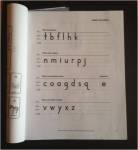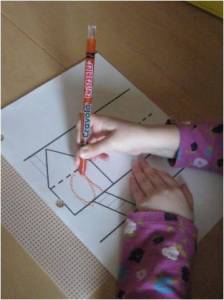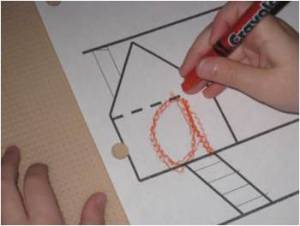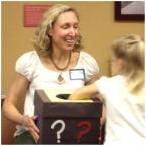This time of year, my parents ask for ideas to help their children make letter formations.
 Start your child working on lower case letters before capitals. I can’t emphasize that enough! Your child will see and use mostly lower case letters when she is reading or writing. A question I often get from parents is, “Which letters should we work on together?” The Wilson Reading System provides a fantastic chart that shows which letter formations to teach together.
Start your child working on lower case letters before capitals. I can’t emphasize that enough! Your child will see and use mostly lower case letters when she is reading or writing. A question I often get from parents is, “Which letters should we work on together?” The Wilson Reading System provides a fantastic chart that shows which letter formations to teach together.
Tactile tools are great ways for getting letter formations instruction to “stick”. Tools include placing paper over a plastic grid and then having your child use a crayon to make a letter. You can use “house paper” to help your child place the specific letter in the right space. After your child writes a letter, have her use her finger to feel the bumps impressed in the paper from the crayon going in the direction of the letter formation. The tactile perception will help your child remember how she formed the letter.
Another tactile teaching tool is to have your child write letters in chalk on fine-grade sandpaper. Have your child trace the chalk letter with her finger. Alternatively use shaving cream. It is messy, but your child will both feel and see in contrast letters as she forms them.
Tracing letters in letter formation workbooks is a good way to reinforce making individual letters. A way to make doing this even more fun is to use colored pieces of acetate. Cut sheets, found in an art store, to the size of your workbook pages. Use dry erase markers and let your child trace and erase each letter. Another tool, a small tablet like a dry erase board can help your child focus on the space and help create a boundary for writing. (I use a 7” x 4 ½” board.)
How your child grasps her pencil is important to mastering letter formation. Try golf pencils, short sticks of chalk or short dry erase markers to encourage your child to practice the three-finger pincer grasp. Your older child will enjoy having many choices of pencil grippers as she masters the three-finger pincer grasp. These are just a few tools and ideas to help your child enjoy and master letter formation. For a link to ideas that will help your young child start strengthening their pincer grip, check out: therapystreetforkids.com What are some tools you use with your child to help with making letters?
What are some tools you use with your child to help with making letters?
For more, see my blog: Reading and Writing Go Hand In Hand!







 Zaner Bloser Manuscript Model – 2010 (A-Z and Numbers)
Zaner Bloser Manuscript Model – 2010 (A-Z and Numbers)